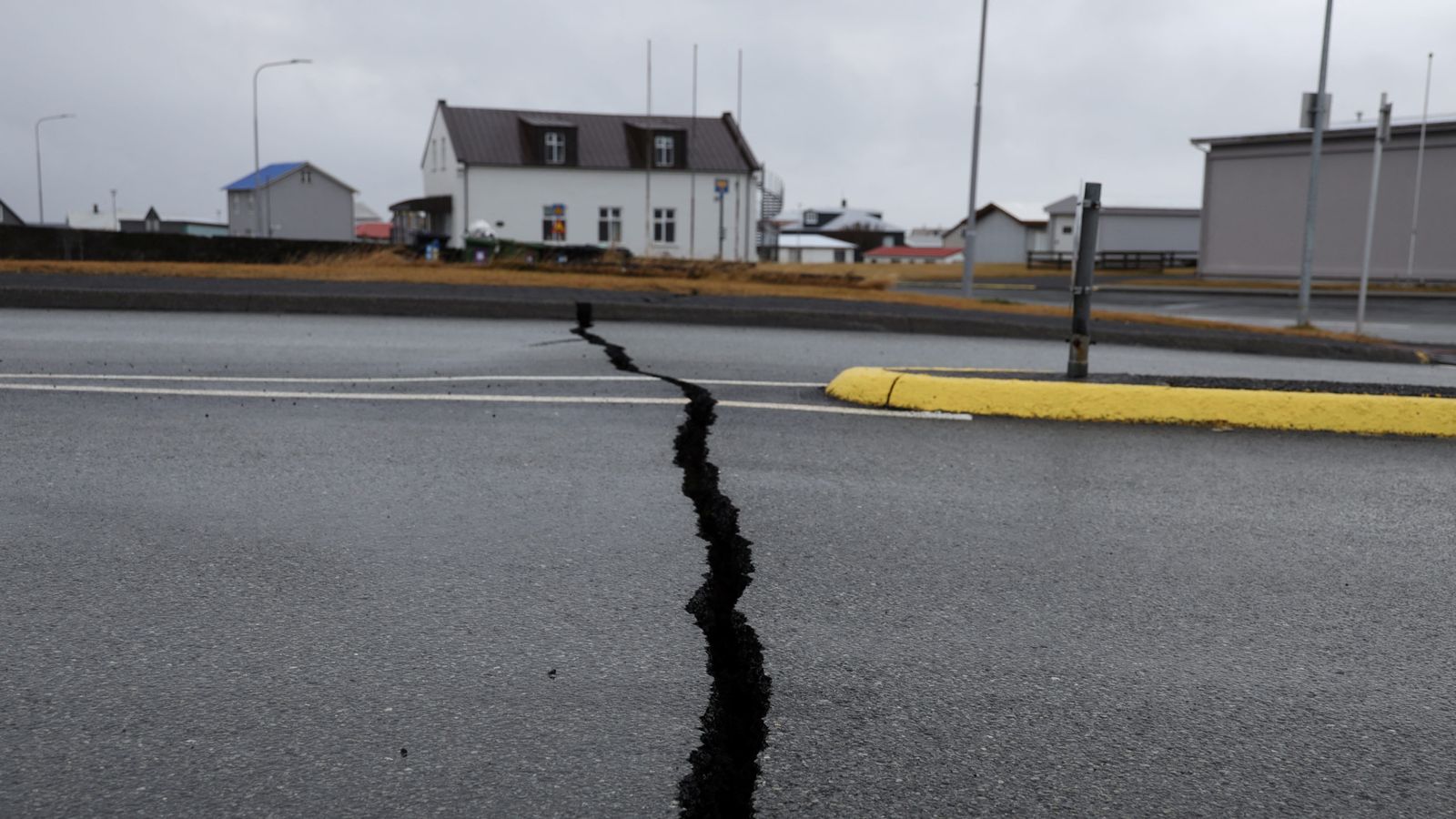Iceland is bracing for a volcanic eruption in the coming days after a series of earthquakes and evidence of hot magma flowing quickly underground.
The fishing town of Grindavik, home to 3,000 people, has been ordered to evacuate amid concerns it could be destroyed by lava flows.
Sky News takes a look at some of the key questions about the volcano and what could happen if there is an eruption.
Where is the volcano?
The Icelandic Meteorological Office has said there is a “considerable” risk of an eruption on or just off the Reykjanes peninsula.
Located southwest of the capital Reykjavik, the peninsula is a volcanic and seismic hotspot.
The town of Grindavik is very close to a new 15km (9 miles) fracture that has opened up, prompting the evacuation.
Will there be an eruption?
Even though earthquake activity died down a little overnight into Monday, an eruption in the next few days is still “highly likely”, according to Bill McGuire, professor emeritus of geophysical and climate hazards at University College London.
Modelling suggests that magma is rising along the fracture and is now as close to the surface as 800m or even less.
What is also uncertain is where exactly along the fracture the eruption will start.
Professor McGuire said: “If it is on land, which is most likely, it will be dominated by spectacular lava ‘fountaining’ and the production of lava flows.
“If magma breaks the surface at the southern end of the fracture, however, it could erupt beneath the sea. This would be a more explosive event that would build a cone of fragmental material.”
Professor McGuire said there was no reason, currently, to think that the eruption will be especially large, but added that it is notoriously difficult to forecast how big eruptions will be.
What happens if the volcano erupts under the sea?
If the eruption occurs in the stretch of fracture that is under the sea, it could become “explosive”, says Dr Michele Paulatto, an expert in volcanic and tectonic processes from Imperial College London.
“If it erupts undersea it could cause a Surtseyan eruption similar to the one that happened in 1963, also in Iceland, and created the island of Surtsey.
“That particular eruption lasted several years, so this is a possibility,” he said.
Will there be another ash cloud like in 2010?
The Eyjafjallajokull eruption back in 2010 produced a huge ash cloud that caused chaos to global air travel.
Dr Dave McGarvie, a volcanologist with the University of Lancaster, says a potential eruption will not lead to disruption like that of Eyjafjallajokull.
He said that event was “unusually disruptive” because of a rare “if not unique” combination of factors.
He added: “The volcanoes on the Reykjanes Peninsula do not have the ability to produce the disruptive ash clouds that characterised the Eyjafjallajokull 2010 eruption.”
What’s more, he says, lessons have been learned since the 2010 incident and even if a future event produced a similar ash cloud there would only be about one-third of the flight cancellations compared to what occurred in 2010.


